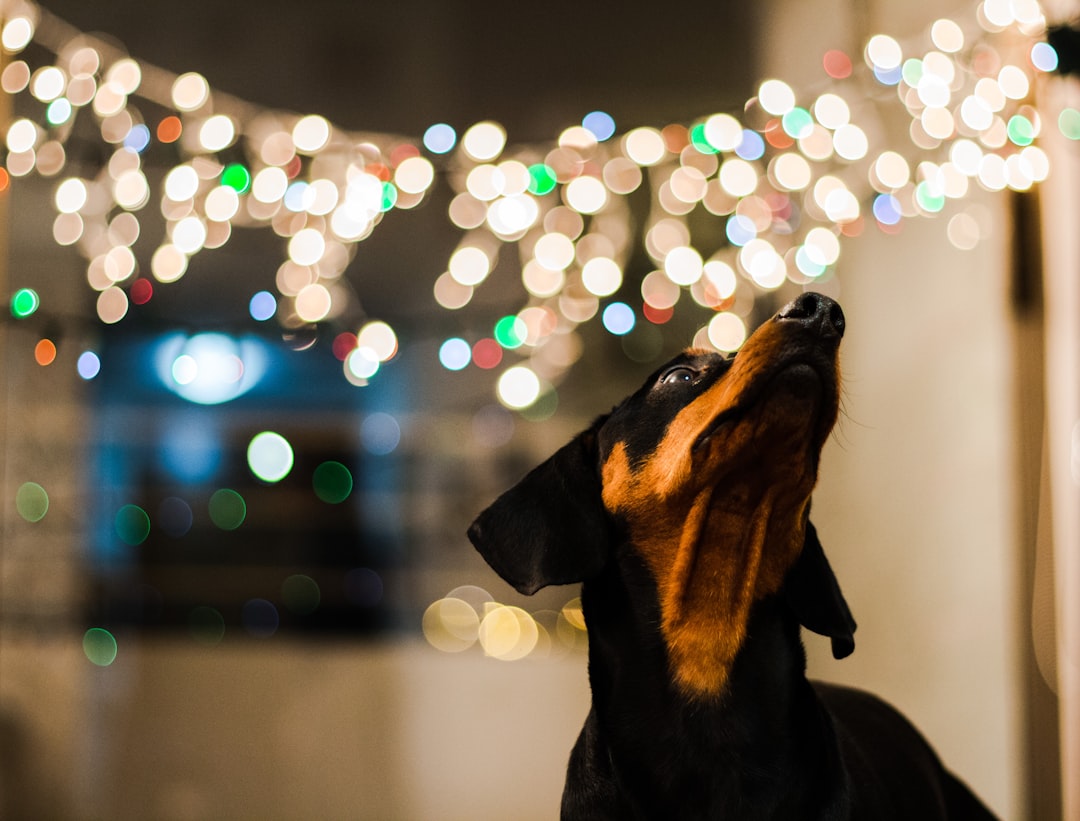Doxin dogs, a charming mix of Dachshund and other breeds, have gained popularity for their unique traits and characteristics. As you delve into the fascinating world of Doxins, you’ll discover the rich heritage of the Dachshund and how it influences the Doxin’s appearance and personality. Understanding these differences will not only enrich your knowledge but also aid in choosing the perfect companion for your lifestyle. Join us in exploring the distinctive features that set Doxies apart and uncover the truth behind common misconceptions.
Understanding the Doxin Breed
The doxin dog, a delightful blend of the Dachshund heritage and other breeds, captures the hearts of many. As a hybrid dog, it boasts unique characteristics that set it apart in the canine world.
Key Characteristics of the Doxin Dog:
- Size: Doxins typically maintain a compact frame akin to the Dachshund, making them suitable for various living spaces.
- Coat: Their coat can vary significantly, often reflecting the smooth, long-haired, or wire-haired traits of their Dachshund lineage.
- Temperament: Doxin dogs are known for their spirited and affectionate nature. They thrive on companionship, making them excellent family pets.
Comparison with Dachshunds:
| Characteristic | Doxin Dog | Dachshund |
|---|---|---|
| Size | Small to Medium | Small |
| Coat Variety | Variable | Smooth/Long/Wire-haired |
| Temperament | Affectionate, Playful | Loyal, Stubborn |
In conclusion, the doxin dog not only inherits the charming qualities of its Dachshund ancestors but also embraces traits from other breeds, enhancing its appeal. Understanding these distinctions can help you appreciate the fantastic nature of this breed even further.
Exploring the Dachshund Heritage
Understanding the heritage of the Doxin dog is crucial to appreciating this delightful hybrid. Originating from the popular Dachshund breed, Doxins inherit many characteristics from their ancestors. Here’s how their lineage influences their traits:
- Dachshund Beginnings: The Dachshund breed emerged in Germany during the 15th century, initially bred for hunting badgers and other small game. Their elongated bodies helped them dig into burrows.
- Crossover Traits: A Doxin dog often showcases unique combinations of the Dachshund’s features mixed with other breeds, typically resulting in varied sizes, coat types, and temperaments.
- Common Characteristics:
- Appearance: Doxins may exhibit the Dachshund’s iconic long body and short legs, but they can also show traits from their non-Dachshund parent, such as differing ear shapes or tail lengths.
- Temperament: Generally, Doxins inherit the spirited and affectionate demeanor of the Dachshund, making them loyal companions.
In summary, the legacy of the Dachshund greatly influences the Doxin dog, providing a fascinating blend of history and characteristics. Celebrate this remarkable heritage in your Doxin!
Identifying Doxies: A Closer Look
Identifying a doxin dog is crucial for potential owners or enthusiasts who want to appreciate this lively breed fully. Here are some defining characteristics to recognize:
- Size: Doxins are small and compact, averaging between 16 to 32 pounds. Their elongated body is distinct among small breeds.
- Coat Types: Doxins boast three primary coat types:
- Smooth: Sleek and short-haired, requiring minimal grooming.
- Longhaired: Luxurious and flowing, needing regular brushing.
- Wirehaired: Textured, providing a unique rugged look; they require consistent grooming.
- Coloration: These dogs come in a variety of colors, including:
- Solid: Tan, Black, Chocolate
- Patterns: Dapple, Brindle
- Ears and Tail: They have long, droopy ears that add to their charm, paired with a medium-length tail that stands proudly.
Understanding these traits helps you distinguish a doxin dog from similar breeds, such as the traditional Dachshund. While Doxins share many similarities with Dachshunds, certain features give them their unique flair.
Physical Characteristics of Doxins
When it comes to the doxin dog, its physical traits stand out prominently. Here’s what you should know:
- Size: The doxin dog generally measures between 8 to 9 inches in height, depending on whether it’s a standard or miniature breed.
- Weight: Adult doxins typically weigh between 8 to 30 pounds, showcasing significant variation based on genetics and size classification.
- Coat: This breed can have three different types of coats:
- Smooth: Sleek and shiny, easy to maintain.
- Long-haired: Soft and flowing, requiring regular grooming.
- Wire-haired: Distinctive rough texture, also needs maintenance but is less consistent in shedding.
| Attribute | Doxin Dog | Dachshund |
|---|---|---|
| Height | 8 to 9 inches | 8 to 9 inches |
| Weight | 8 to 30 pounds | 11 to 32 pounds |
| Coat Types | Smooth, Long, Wire | Smooth, Long, Wire |
The doxin dog exhibits these traits consistently, making them a beloved companion. Understand these characteristics to appreciate the uniqueness of your furry friend even more!
Distinct Traits of the Dachshund
The Dachshund, a breed often confused with the doxin dog, possesses several distinct traits that set it apart. Understanding these characteristics will help you appreciate the unique qualities of the Dachshund.
- Body Shape:
Dachshunds have an elongated body, which contributes to their endearing appearance. This shape allows them to dig and burrow, a trait inherited from their hunting ancestry. - Ears:
Their long, floppy ears enhance their charm and serve a practical purpose, helping to funnel scents towards their noses. - Temperament:
Dachshunds exhibit a confident and curious temperament. They can be quite vocal, often alerting their owners to any perceived danger. - Coat Types:
This breed comes in three coat varieties: smooth, long-haired, and wire-haired, each with its own grooming needs. - Colors:
You’ll often find Dachshunds in a range of colors and patterns, including solid, dappled, and brindle.
In contrast, the doxin dog typically reflects a combination of Dachshund traits and those of other breeds. Knowing these distinctions will help potential pet owners make informed decisions based on their lifestyle and preferences.
Comparative Analysis: Doxin vs. Dachshund
When comparing a doxin dog with its Dachshund counterpart, it’s essential to recognize both the similarities and differences. Here’s a breakdown that highlights key aspects:
| Feature | Doxin Dog | Dachshund |
|---|---|---|
| Size | Small to medium | Standard and miniature |
| Weight | 15-30 lbs | 8-30 lbs (depending on type) |
| Coat Type | Smooth, long, or wire-haired | Smooth, long, or wire-haired |
| Temperament | Energetic, quirky, and loyal | Brave, stubborn, and affectionate |
| Lifespan | 12-15 years | 12-16 years |
Key Takeaways:
- A doxin dog often exhibits various coat types and sizes, just like the Dachshund.
- Both breeds share a lively temperament, making them fantastic companions.
- However, the doxin dog tends to have a wider variety in physical appearance due to hybridization.
Understanding these distinctions will help you appreciate the unique charm that a doxin dog brings to the table while also recognizing the beloved traits of the classic Dachshund.
Temperament and Behavior in Doxins
Understanding the temperament and behavior of the doxin dog is vital for any potential owner. Generally speaking, doxins exhibit a range of personality traits that make them unique companions. Here’s what you can expect:
- Playful & Energetic: Doxins thrive on playtime and need regular exercise to keep them happy. They possess a spirited energy that will keep you entertained.
- Loyal & Affectionate: These dogs form strong bonds with their families, offering unwavering loyalty and affection. Expect plenty of cuddles and a loving demeanor.
- Curious & Intelligent: The doxin dog is known for its curiosity. They love exploring their surroundings, which showcases their intelligence—and sometimes leads to mischievous behavior!
- Stubbornness: Be prepared for a challenge; doxins can exhibit stubborn streaks during training. Consistent, positive reinforcement works wonders.
In short, the doxin dog combines energetic playfulness with loyal affection, making them a delightful addition to any home. Just remember, patience is key during training!
Temperament and Behavior in Doxins
When discussing the temperament of a doxin dog, we enter a realm of unique and distinct behaviors. Generally, doxins are known for their lively and spirited nature. Here’s what you should know:
- Affectionate Companions: Doxins thrive on companionship and are loyal to their families. They bond closely, often following their owners around.
- Curious Explorers: These dogs exhibit a strong curiosity. Be prepared for them to sniff around and investigate every nook and cranny.
- Protective Guardians: Doxins often take up the role of watchdogs. Their tendency to bark at strangers showcases their protective instinct.
- Intelligent Learners: Training a doxin dog requires patience, as they can be a bit stubborn. However, they respond well to positive reinforcement techniques.
In summary, the temperament of a doxin blends intelligence, loyalty, and curiosity. Understanding these traits will help you nurture a well-adjusted and happy doxin dog in your home.
Health Considerations for Dachshunds and Doxies
When it comes to owning a doxin dog, awareness of health considerations is crucial. The health of your pet significantly impacts their quality of life. Here are the key health issues to keep in mind:
- Back Problems: Due to their elongated spines, both doxin dogs and dachshunds are prone to intervertebral disc disease. Regular check-ups and maintaining a healthy weight are vital.
- Obesity: Doxins can easily gain weight, which exacerbates back problems. Monitor their diet and ensure they get daily exercise.
- Dental Health: Poor dental hygiene can lead to serious health issues in both breeds. Regular dental cleanings and at-home care are essential.
- Eye Conditions: Both breeds may suffer from cataracts or progressive retinal atrophy. Routine veterinary eye exams can catch problems early.
Comparison Table: Health Issues in Doxin vs. Dachshund
| Health Issue | Doxin Dog | Dachshund |
|---|---|---|
| Intervertebral Disc Disease | High Risk | High Risk |
| Obesity | Medium Risk | Medium Risk |
| Dental Issues | Medium Risk | Medium Risk |
| Eye Conditions | Medium Risk | Medium Risk |
Be proactive; understanding these health considerations ensures that your doxin dog stays healthy and happy throughout their life.
Choosing the Right Breed for Your Lifestyle
When considering a doxin dog, it’s essential to assess your lifestyle to find the best match. Here’s what you need to keep in mind:
- Living Space: Doxin dogs thrive in various environments, but they adapt better to homes with ample space for play. If you have a cozy apartment, consider their energy levels.
- Exercise Needs: Although doxins have a playful nature, they require regular exercise. Plan for daily walks and playtime to keep them happy and healthy.
- Time Commitment: Doxins are affectionate and love companionship. If you’re frequently away from home, they may not be the best fit. Consider the time you can devote to your dog.
- Family Dynamics: If you have children or other pets, assess how a doxin dog will fit into your family. They typically have a friendly disposition but may need proper socialization.
- Grooming Requirements: Depending on the coat type (long-haired, short-haired, or wire-haired), grooming commitments can vary. Choose a breed that aligns with your grooming preference.
Ultimately, the key lies in aligning a doxin dog’s needs with your lifestyle. A well-matched dog ensures a long-lasting bond and a happy home!



